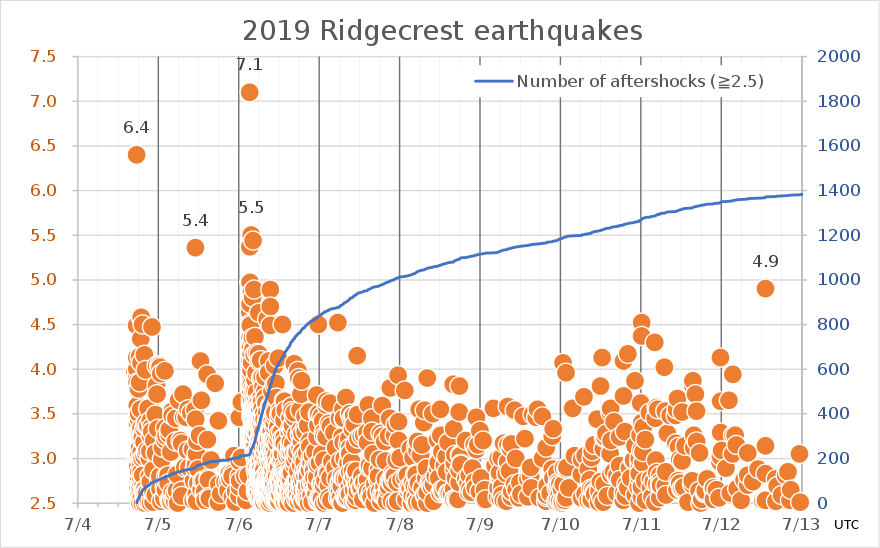California Quake Faults Are Highly Sensitive to Solid Earth Tides, Say Scientists
Oceans have tides, and so does the solid earth. Could they have an effect on earthquake faults? Yes, say scientists, but that doesn’t necessarily mean they cause big quakes.
Rising and falling ocean tides, driven by the Earth’s daily interactions with the Moon and Sun, are familiar to almost everyone. What many people do not realize is that the land also experiences tides, driven by the same gravitational forces. Land is more rigid than water, and so rises and falls less, but it does move, by up to 20 centimeters in some places. This is called a solid earth tide, and it produces stresses—including within earthquake faults. Is this enough to affect those faults? In some cases, the answer is yes, say scientists.
Reporting at the annual meeting of the Seismological Society of America in April, researchers said that faults in the Ridgecrest area of southwestern California trembled slightly as tidal stresses reached their cyclical maximums in the year and a half before a July 2019 sequence of sizable earthquakes. Their paper on the discovery appeared in the journal Geophysical Research Letters in July.
“The signal of tidal modulation becomes extremely strong” after 2018, said Eric Beauce, a postdoctoral researcher at Columbia Climate School’s Lamont-Doherty Earth Observatory, who helped lead the research.

The July 4-5, 2019 sequence consisted of three main shocks of magnitudes 6.4, 5.4 and 7.1, plus many perceptible aftershocks in the days following. The increase in the rate of seismicity during peak tidal stresses in the year and a half before was detected in the area where the 7.1 shock hit. It was the state’s strongest earthquake in 20 years. No one was killed, but that and the other big shocks damaged houses and roads, and cut water and gas supplies to thousands of people.
“The link does not mean that tidal stresses, which are very small compared to other tectonic stresses, triggered the earthquake,” Beauce cautioned. “But it might indicate that something started to happen in the fault zone, something that is an indicator of the upcoming earthquake.”
Although researchers have known about these tiny stress changes for more than a century, it has been difficult for them to extract their signal from the seismic record, and to determine whether they modulate seismicity in some way. In the past ten years, however, better earthquake detection and analysis techniques have made it possible to search through earthquake catalogs of years past to find the signal of tidal stresses.
Beauce and his colleagues built a rich, high-resolution earthquake catalog covering a decade of microseismicity in the Ridgecrest area, using machine learning algorithms along with other techniques. (Microseismicity usually refers to earthquakes of magnitude 2.0 or smaller.)
“There is suggestive evidence that peak seismicity happens when tidal stresses are maximum,” Beauce said. “But this modulation is weak, and because it is weak, it is only suggested.”
Other researchers who have looked at records preceding the deadly 2004 Indian Ocean and 2011 Tohoku megathrust earthquakes have detected increases in seismicity connected to tidal stresses, which occurred decades before the earthquakes. Some scientists also have been able to generate similar results in lab-created earthquake experiments.
The tidal findings do not have direct implications for earthquake forecasting, said Beauce. “We do not know if we are looking at a general phenomenon or one specific to the Ridgecrest earthquake only,” he said. “I see it as a way of getting new observational constraints on the physics of earthquakes, possibly the preparation and nucleation of earthquakes.”
Adapted from a press release by the Seismological Society of America.
